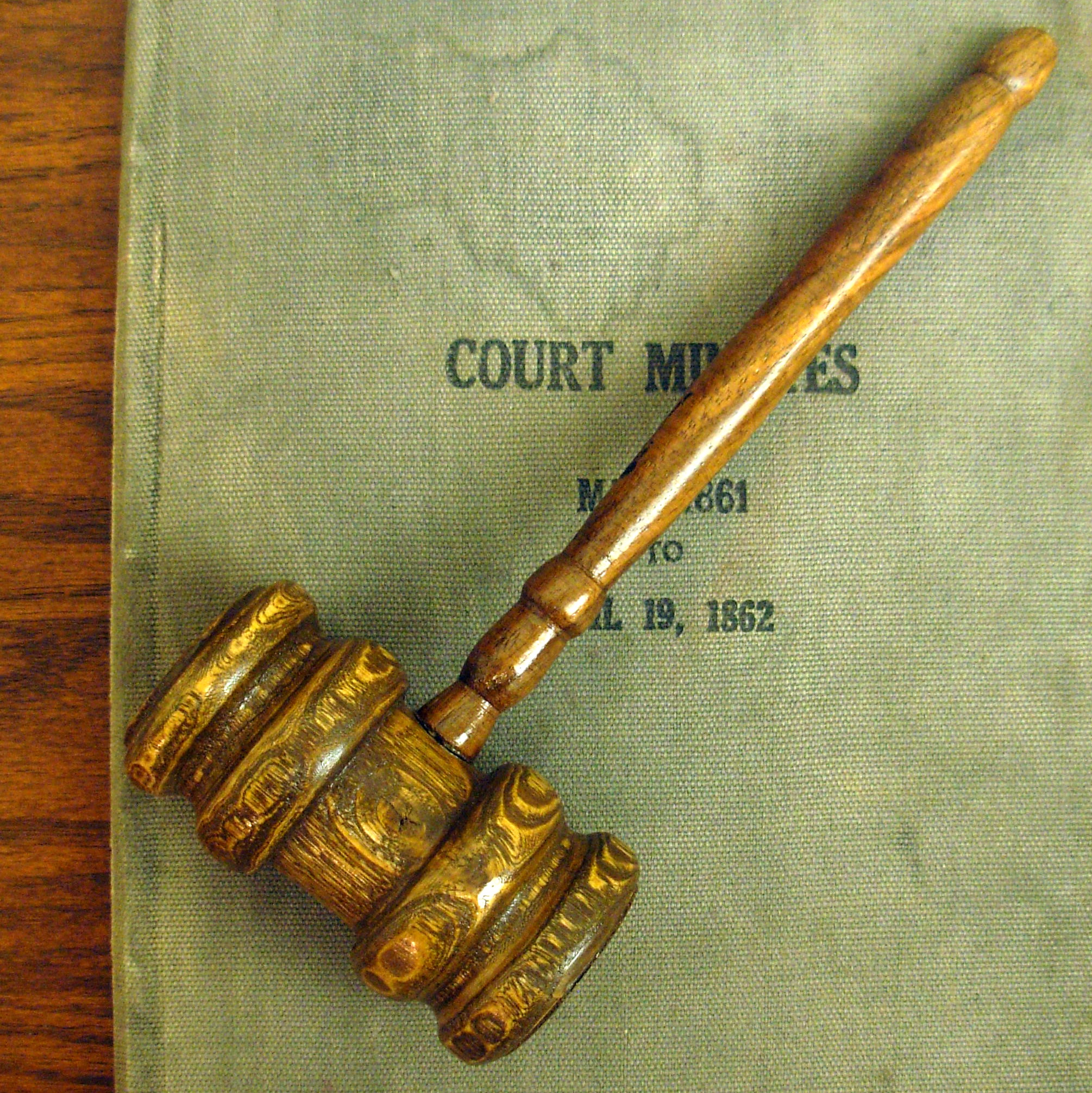New Jersey publishes the jury instructions online in PDF and DOC format (link is to a PDF table of contents). I once sat as a juror in an aggravated assault and unlawful use of a weapon case (a stabbing in a public place) where the defendants claimed self-defense. At this point, the details are unimportant, except that in the course of the trial I received an education in the standards by which actions in self-defense are to be judged in courtrooms in NJ. This, of course, is of utmost importance to know for anyone who owns a firearm and keeps it in functional condition, even more so if you plan on carrying a firearm in public (not an option in NJ for the regular person, of course.) It is, however, a good idea for anyone to be aware of, both for their own personal legal safety and also to be a well-informed person. Well-informed or not, I am not a lawyer, please consult one before believing anything or everything you read on the internet about the law.
One thing about jury instructions that I believe to be superior to reading caselaw and statute law and attempting to interpret, is that they are written to explain the law as-applied for the benefit of the layman, rather than a lawyer, judge, or legislator. Technical terms are explained in layman’s term, and while can lead to leaky abstractions, it’s good for an overview.
The section I’m going to be looking at in this post is found in Chapter 3 “General Principles of Justification†– specifically
JUSTIFICATION – SELF DEFENSE In Self Protection (PDF)
JUSTIFICATION – USE OF FORCE IN PROTECTION OF OTHERS (PDF)
JUSTIFICATION – SELF DEFENSE USE OF FORCE IN DEFENSE OF PERSONAL PROPERTY (PDF)
JUSTIFICATION – USE OF FORCE UPON AN INTRUDER (PDF)
The middle two I’ll just touch on briefly, as they are rather wordy explanations of some pretty simple concepts.
First, let’s look at the general case, Self Defense in Self Protection, excerpted below
The statute reads:
“The use of force upon or toward another person is justifiable when the actor reasonably believes that such force is immediately necessary for the purpose of protecting himself against the use of unlawful force by such other person on the present occasion.”
In other words, self defense is the right of a person to defend against any unlawful force. Self defense is also the right of a person to defend against seriously threatened unlawful force that is actually pending or reasonably anticipated. When a person is in imminent danger of bodily harm, the person has the right to use force or even deadly force when that force is necessary to prevent the use against him/her of unlawful force. The force used by the defendant must not be significantly greater than and must be proportionate to the unlawful force threatened or used against the defendant.
The use of deadly force may be justified only to defend against force or the threat of force of nearly equal severity and is not justifiable unless the defendant reasonably believes that such force is necessary to protect himself/herself against death or serious bodily harm. Deadly force is defined as force that the defendant uses with the purpose of causing or which he/she knows to create a substantial risk of causing death or serious bodily harm. By serious bodily harm we mean an injury that creates a substantial risk of death or which causes serious permanent disfigurement or which causes a protracted loss or impairment of the function of any bodily member or organ.
For example, if one were to purposely fire a firearm in the direction of another person, that would be an example of deadly force. A mere threat with a firearm, however, intended only to make the victim of the threat believe that the defendant will use the firearm if necessary is not an example of deadly force.
A reasonable belief is one which would be held by a person of ordinary prudence and intelligence situated as this defendant was.
Even if you find that the use of deadly force was reasonable, there are limitations on the use of deadly force. If you find that the defendant, with the purpose of causing death or serious bodily harm to another person, provoked or incited the use of force against himself/herself in the same encounter, then the defense is not available to him/her.
If you find that the defendant knew that he/she could avoid the necessity of using deadly force by retreating, provided that the defendant knew he/she could do so with complete safety, then the defense is not available to him/her
So we have a proportionality requirement in NJ – you can’t use deadly force except in reasonable belief that such force is necessary and (for lack of a better word) proper. My problem with this is that the average person does not really believe that an unarmed attack may “create a substantial risk of causing death or serious bodily harm.†See, e.g, the Zimmerman “trial-by-press†or pretty much any self-defense incident where the attacker was unarmed. I don’t see this changing any time soon, either.
The really scary thing, from the point of view of use of deadly force in self-defense is the second highlighted passage. This one requires that the defender be a mind-reader, and be able to distinguish in the heat of the moment whether someone who offers a threat of violence is sincere about it or not, or is merely trying to scare the defender. I about fell out of the jury box when I heard that part of the instruction; as the judge made it clear that a mere threat was not sufficient. I am given to understand this is outside the mainstream of US law on self-defense, but I’ve not made any more than a cursory study of non-NJ law. So, in NJ it would appear you have to let them shoot/stab/swing first if you wish to use deadly force in self-defense (in public, anyway, see below). UPDATE: Mike, below, points out that the sentence actually refers to the defendant, meaning that the jury instructions say that you threaten to shoot someone as part of your self-defense, that is not considered use of deadly force. Since you can use force to defend yourself against the threat of force, it would appear that in the face of a threat of deadly force you may actually respond with use of deadly force. In theory, anyway.
Finally, there is a duty to retreat (with the apparently usual “in complete safety†caveat) prior to the use of deadly force (but not, apparently, prior to the use of force).
In all cases,
The State has the burden to prove to you beyond a reasonable doubt that the defense of self defense is untrue.
Which is something, I guess.
Use for force in protection of others is basically the same as using force in defense of yourself:
… the use of force upon or toward that person of another is justifiable to protect a third person when:
(1) The actor would be justified … in using such force to protect himself against the injury he believes to be threatened to the person whom he seeks to protect and
(2) Under the circumstances as the actor reasonably believes them to be, the person whom he seeks to protect would be justified in using such protective force; and
(3) The actor reasonably believes that his intervention is necessary for the protection of such other person.
Interestingly enough, the defendant’s knowledge of the situation, not the actual facts of the situation, apply
In applying this test [of reasonable belief] you are instructed to disregard any finding that the person in whose behalf (defendant) intervened was in fact the aggressor or that no defensive measures on his/her behalf were actually necessary, but you may consider everything defendant knew when he/she acted, including these same factors if you find that he/she knew them.
The rest of the instruction basically summarizes the duties and rights incumbent on the use of force on one’s own behalf, and would appear to be intended for use with the appropriate jury instruction for those cases.
Use of force in defense of personal property – you basically can’t use deadly force at all, and use of non-deadly force is limited in several ways. Since this is a firearms rights blog, and since actual use of a firearm is deadly force (and brandishing one without intent is unwise), I’ll give it a pass.
Use of force on an intruder is an exception to the general rule requiring retreat, and there is no direct mention of proportionality; though the instructions do not specifically disclaim proportionality. However the conditions under which a defendant is justified in using force include refusal of an intruder to disarm, surrender, or withdraw.
Under certain conditions, the law allows a person to use force upon another, and the use of such force does not constitute a criminal offense. The law exonerates a defendant who uses force (or deadly force) upon or toward an intruder who is unlawfully in a dwelling when the defendant reasonably believes that the force is immediately necessary for the purpose of protecting himself/herself or other person(s) in the dwelling against the use of unlawful force by the intruder on the present occasion.
For the force used by the defendant against another to be justified, the following two conditions must exist:
1. The other person (victim) was an intruder who was unlawfully in a dwelling. An intruder is one who is unlawfully in the dwelling–that is, he/she was not licensed or privileged to be in the dwelling. The term “dwelling” means any building or structure, though movable or temporary, or a portion thereof, which is used as a person’s home or place of lodging. (A dwelling includes a “porch or other similar appurtenance.”)
2. The defendant reasonably believed that force (deadly force) was immediately necessary for the purpose of protecting himself/herself or other person(s) in the dwelling against the use of unlawful force by the intruder on the present occasion.
A reasonable belief exists when a defendant, to protect himself/herself or a third person, was in his/her own dwelling at the time of the offense or was privileged to be thereon, and the encounter between the defendant and intruder was sudden and unexpected, compelling the defendant to act instantly, and the defendant reasonably believed that the intruder would inflict personal injury upon the defendant or others in the dwelling, or the defendant demanded that the intruder disarm, surrender or withdraw, and the intruder refused to do so.
If the defendant did employ protective force, he/she has the right to estimate the necessity of using force without retreating, surrendering position, withdrawing or doing any other act which he/she has no legal duty to do or abstaining from any lawful action.
Now, absence of evidence is not necessarily absence of evidence, but the two highlighted sections suggest that the normal rules of proportionality of force are suspended. This is definitely someplace I’d like actual legal advice on, though; but I’m not going to pay Mr. Nappen’s consulting rate to get an answer to, or buy his out-of-print book at over $100 to answer, at least not today. This eventuality was brushed over by the judge in the case I sat on the jury on (he did mention it, though, despite there being no chance of the defendants using this defense), possibly out of a sense of completeness.
Anyway, the state of jury instructions covering the use of force in NJ suggest that it’s not really a good idea if you have any alternatives, but it is an alternative in extremis.



